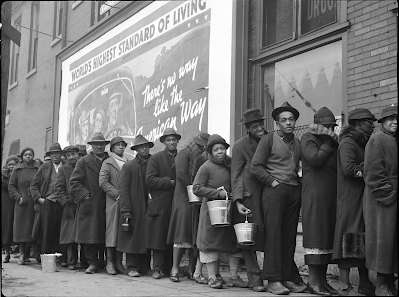October 19, 2025
In a Turkish terrorist court in Diyarbakir, this Kurdish woman was sentenced to 13 years in prison, accused of belonging to the Kurdistan Workers Party, or PKK, which seeks to create an independent state in southeastern Turkey, 2006
Even people who don’t know Ed Kashi’s name are often familiar with his photographs. Over the course of his nearly 50-year career, the award-winning photojournalist has created memorable long-form photo-essays for National Geographic, and his work has been published in Time, Newsweek and The New York Times. The World Photography Organisation has called him “one of the leading and most innovative photojournalists of our time.”
Kashi’s current, career-spanning exhibition at Monroe Gallery of Photography in Santa Fe, “Ed Kashi: A Period in Time,” is also the title of his most recent book. The exhibition runs through Nov. 16.
One of Kashi’s most compelling images from that series was taken at a military tribunal in Diyarbakir, Turkey. A fashionably dressed Kurdish woman, accused of being a member of the outlawed Kurdistan Workers’ Party (PKK), stands at a cage-like witness stand, a handful of armed military men behind her.
“I think I got in because I was following a Kurdish human rights lawyer, so I sort of traipsed into the courtroom with him and made a few pictures. And that ended up being a very significant image,” Kashi said. “But after that image appeared in the magazine, they (the Turkish government) confiscated all the copies of (that) 1992 issue of National Geographic within Turkey.”
Despite the attempted censorship, that image, and others from the series, reached a wide international audience. Kashi credits those images with bringing much greater attention to the persecution of the Kurds, a subject that had previously gone underreported.
The Turkish government, meanwhile, grew increasingly restrictive on press freedom. Government repression is an ever-present challenge for photojournalists around the world, Kashi said, and something he has contended with many times.
“For journalists, and particularly for photographers, there is a constant battle of how much can we get away with. How close can we get? What can we access? And when that gets shut down, we have to find other ways to gain access,” he said.
The global landscape for press freedom has gotten significantly worse in recent years, according to Kashi, with widespread and concerted attacks on journalists that he calls “unprecedented.”
“Look at our own Pentagon and the restrictions they’re trying to place on the media,” Kashi said. “It’s a very interesting and tricky moment right now for the media in general, all around the world. There’s been an increase in journalists being arrested, imprisoned and in some cases killed, particularly in Gaza.”
Although Kashi said he has sometimes risked his life for stories, he was never deliberately targeted, the way he said some journalists are currently being targeted and killed in places such as Gaza and Ukraine.
“I’ve not worked in Ukraine, but a colleague of mine, who works a lot with the New York Times as a photographer, was just saying, the scariest thing is when you’re driving down a highway and you hear a drone overhead. It’s not even about (accidentally being hit by) missiles or bombardment from planes or artillery. It’s that a drone can take your car out because they suspect you of being the enemy, or they just want to,” Kashi said. “They know you’re a journalist. They wanted to target you.”
Despite the dangers, photojournalists continue doing their jobs, Kashi said, because they know it can change people’s hearts and minds. Kashi has seen the far-reaching impact his own work has had, and he hopes it will inspire others.
“If you tell good stories, and you tell them in an authentic and sincere way, you can reach people. You can penetrate their consciousness,” Kashi said. “And whether they donate money, or they get involved through their actions, or, at the very least, you might change their mind about something. That’s the reason we must do this work.”

































